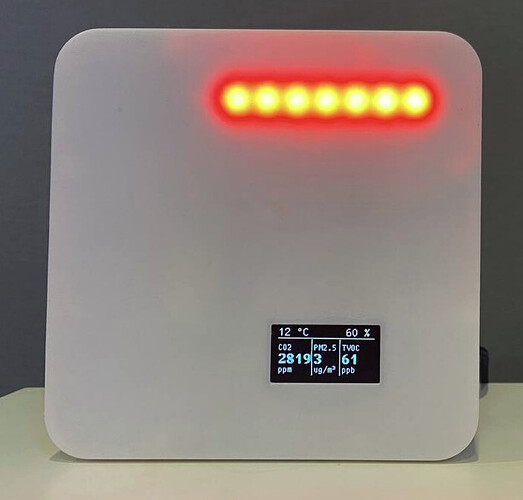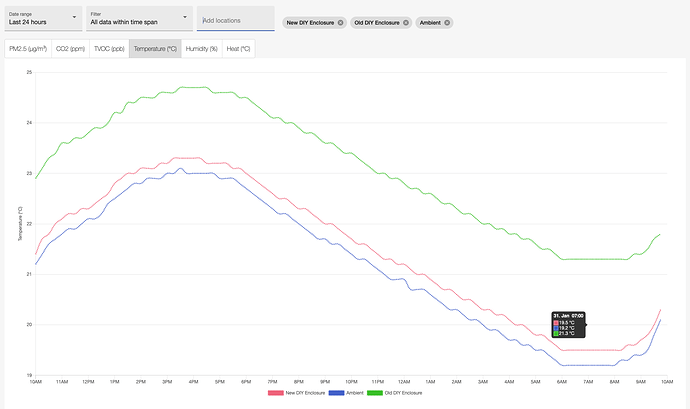Thank you for the valuable feedback.
I want to share with you an update on the DIY v2 design.
I incorporated the following:
- added the breakout pins (now compatible with 2.56mm pin headers)
- added a Bosch BME sensor slot
- added a slot for the bigger OLED display either on the front or backside
- added a 2nd PMS connector that fits the standard cable
- improved the naming conventions
- flipped the S8 sensor to have the air intake on the top (in line with the recommended mounting direction)
I experienced with the ESP32 mini but it is difficult to get it placed inside the enclosure also due to the cable coming out of it that needs space. So at the moment, I believe it’s better to stick with the ESP8266.
Here is the current layout.
I am also running temperature measurements against the old DIY enclosure / PCB (without the external temperature probe) and you can see that we are now only 0.3C above ambient air temperature whereas the old enclosure is 2.0C above.
I will keep you posted. If you have any further feedback, questions or ideas please let me know.




